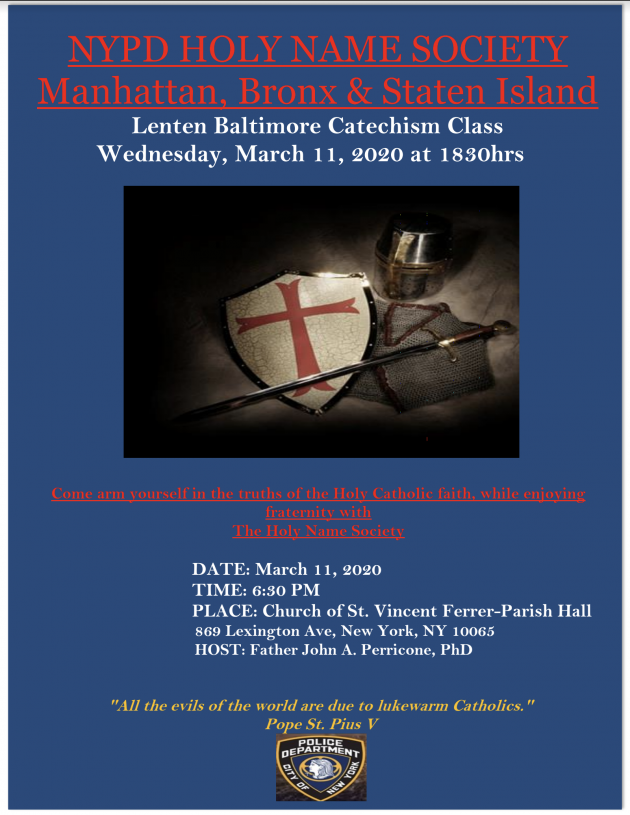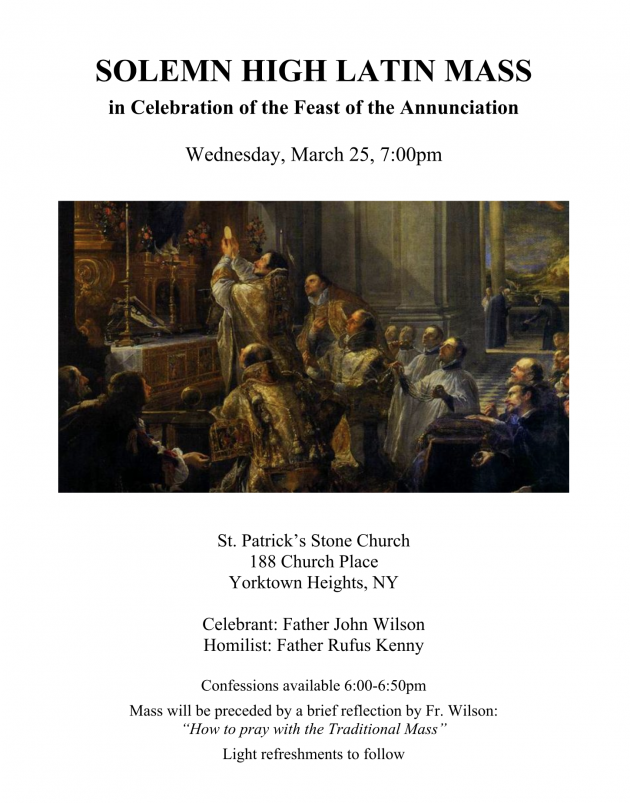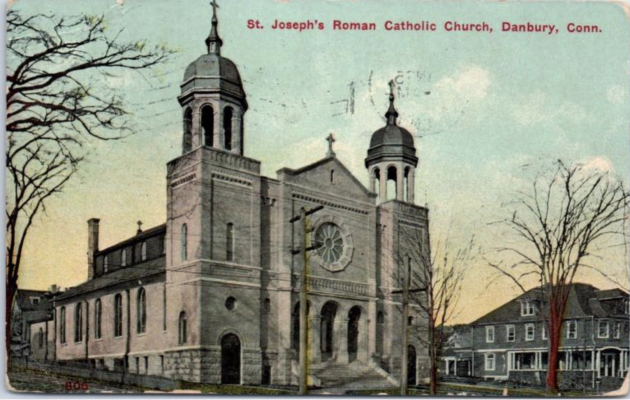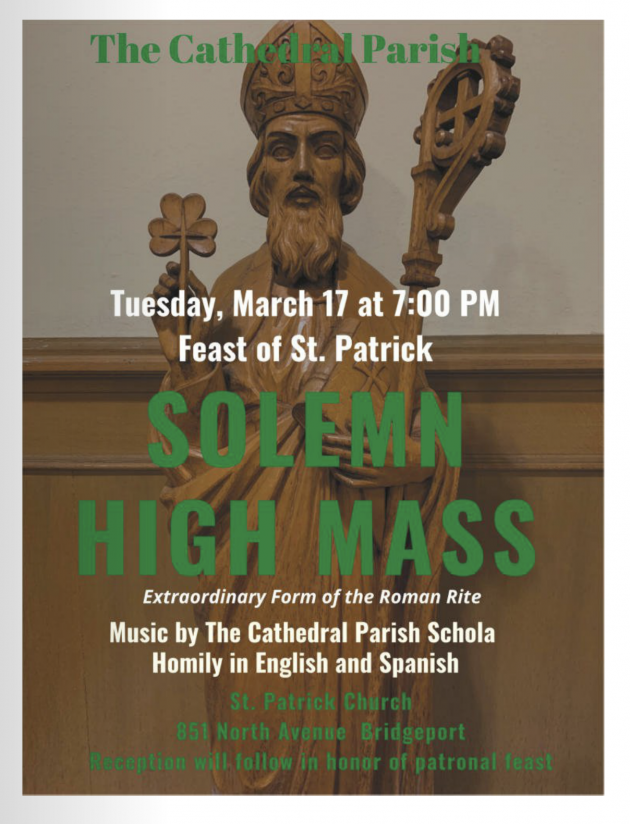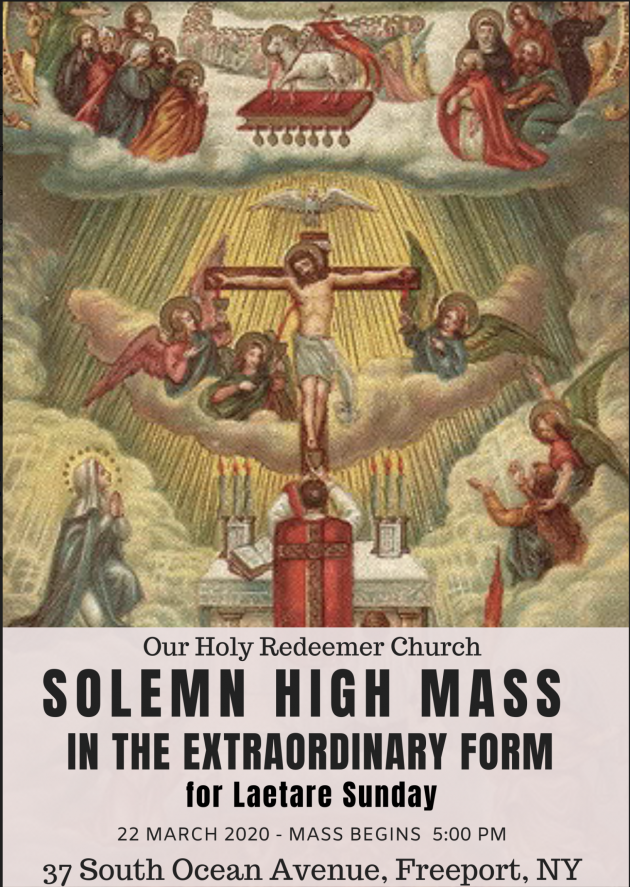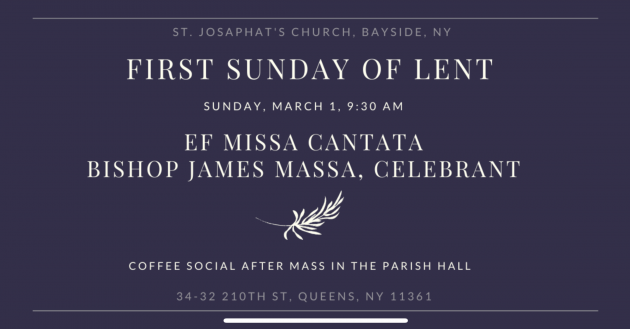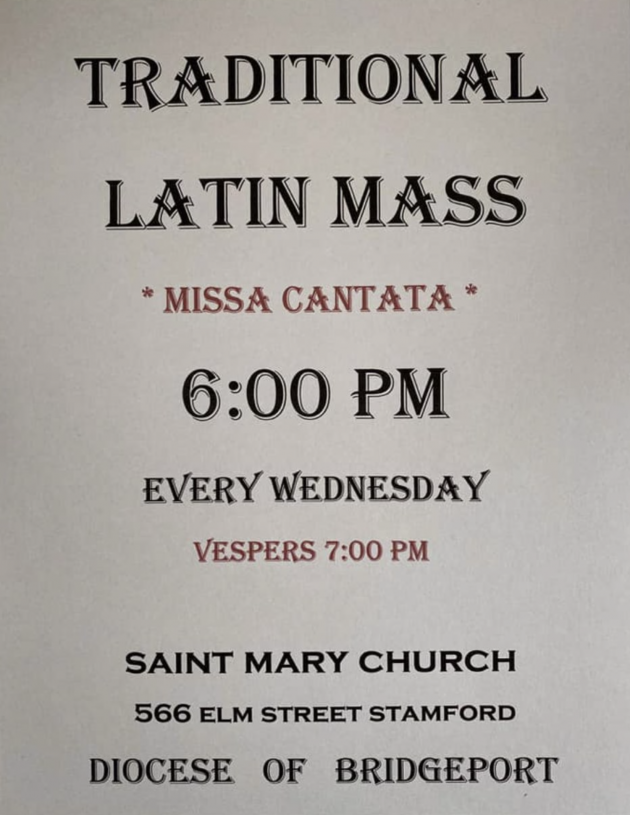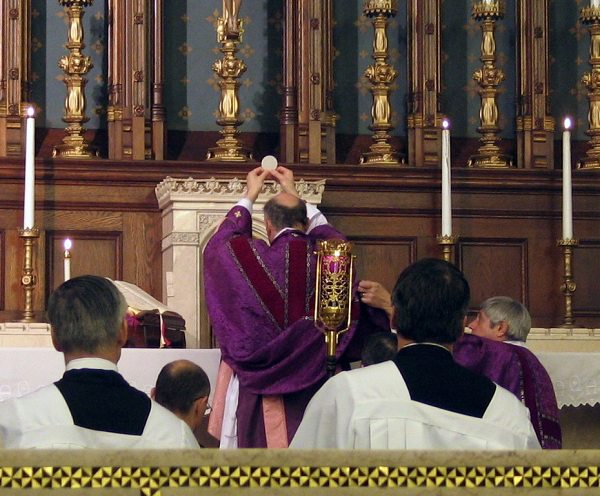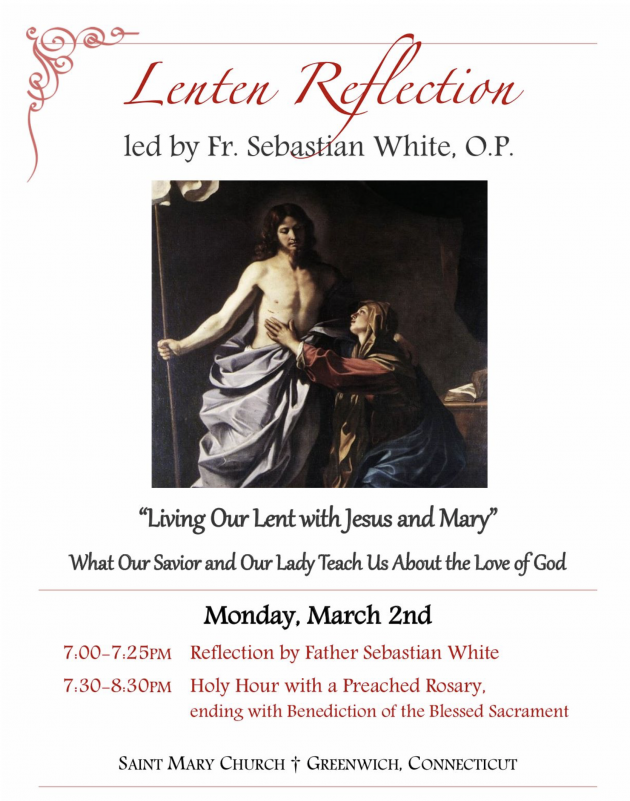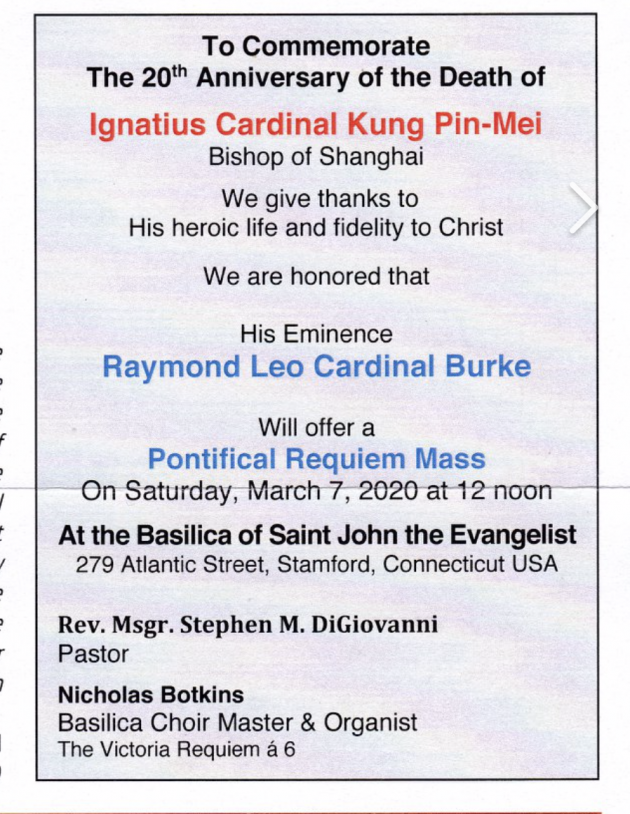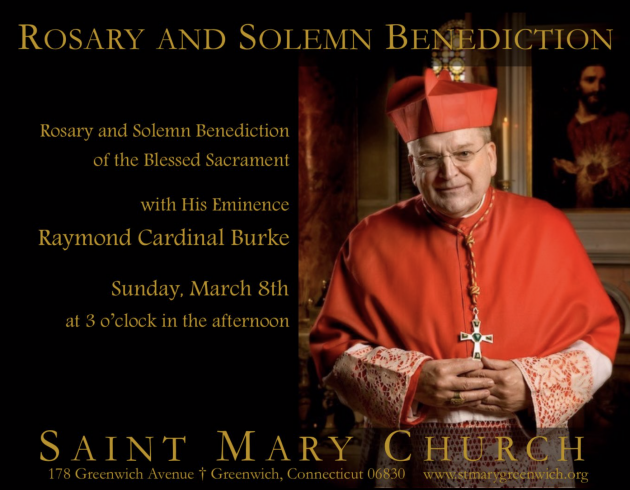2
Mar
2
Mar
1
Mar
Solemn Mass in Danbury
Posted by Stuart ChessmanThere will be an Extraordinary Form Solemn Vespers and Mass at St. Josephs Church in Danbury,CT, Sunday, March 8th at 4:30 PM. Music will be provided by Viri Galilaei under the direction of David Hughes.
29
Feb
29
Feb
29
Feb
Beginning this Wednesday, March 4, there will be a Missa Cantata followed by Vespers at St. Mary in Stamford, CT. The Viri Gallilaei, a men’s chant choir, will be singing. Fr Michael Clarke will be the first priest to offer this scheduled Mass, followed by other priests in the area.
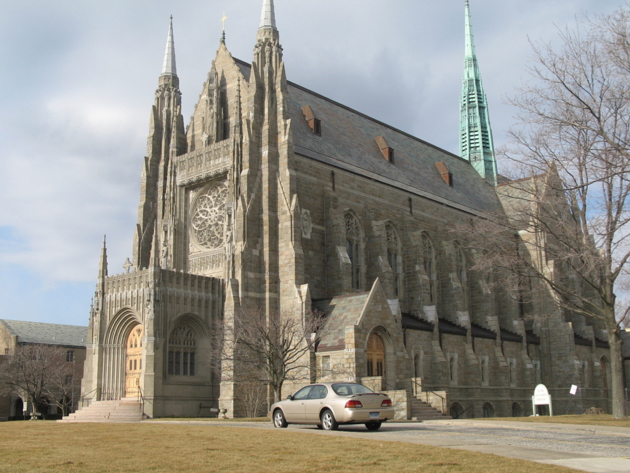
Early readers of our blog will remember that there was a weekly Sunday Missa Cantata at St. Mary’s Stamford about 13 -15 years ago.
Archbishop Salvatore Cordileone celebrated a Solemn Mass at St. Mary’s Stamford on Feb. 25, 2007. To his right is Father Richard Cipolla acting as deacon.
29
Feb
29
Feb
Missa Cantata in Neptune, NJ
Posted by Stuart ChessmanOn Wednesday, March 18 at 6 pm at Holy Innocents Church, 3455 West Bangs Avenue, Neptune, NJ, Pastor Fr. H. Todd Carter will offer a Traditonal Latin Mass with Gregorian Chant.
Contact us
Register
- Registration is easy: send an e-mail to contact@sthughofcluny.org.
In addition to your e-mail address, you
may include your mailing addresss
and telephone number. We will add you
to the Society's contact list.
Search
Categories
- 2011 Conference on Summorum Pontifcum (5)
- Book Reviews (98)
- Catholic Traditionalism in the United States (24)
- Chartres pIlgrimage (17)
- Essays (177)
- Events (678)
- Film Review (7)
- Making all Things New (44)
- Martin Mosebach (35)
- Masses (1,352)
- Mr. Screwtape (46)
- Obituaries (18)
- On the Trail of the Holy Roman Empire (23)
- Photos (347)
- Pilgrimage Summorum Pontificum 2021 (7)
- Pilgrimage Summorum Pontificum 2022 (6)
- Pilgrimage Summorum Pontificum 2023 (4)
- Sermons (79)
- St. Mary's Holy Week 2019 (10)
- St. Mary's Holy Week 2022 (7)
- St. Mary's Holy Week 2023 (7)
- St. Mary's Holy Week 2024 (6)
- Summorum Pontificum Pilgrimage 2024 (2)
- Summorum Pontificum Pilgrimage 2025 (7)
- The Churches of New York (198)
- Traditionis Custodes (49)
- Uncategorized (1,384)
- Website Highlights (15)
Churches of New York
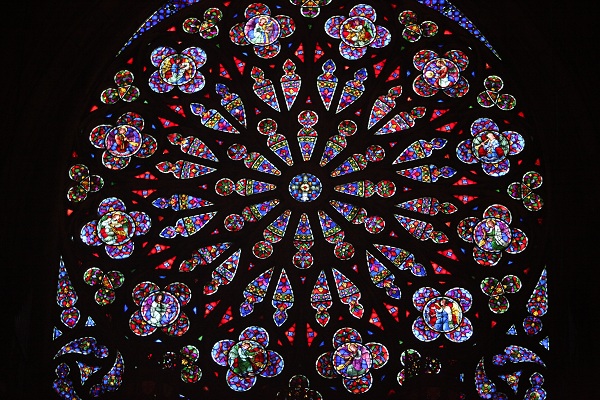
Holy Roman Empire
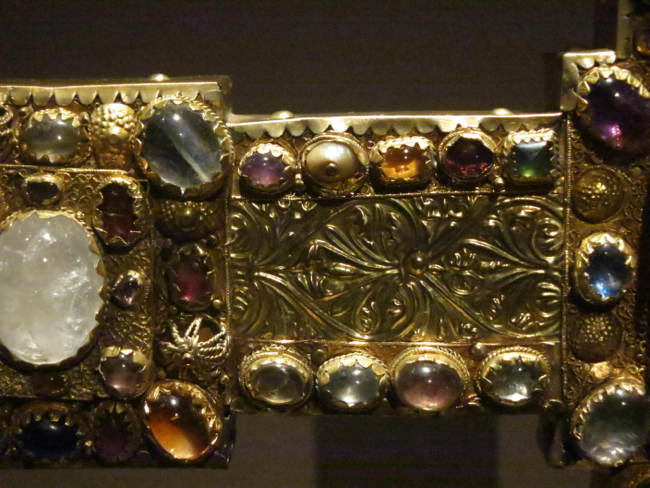
Website Highlights
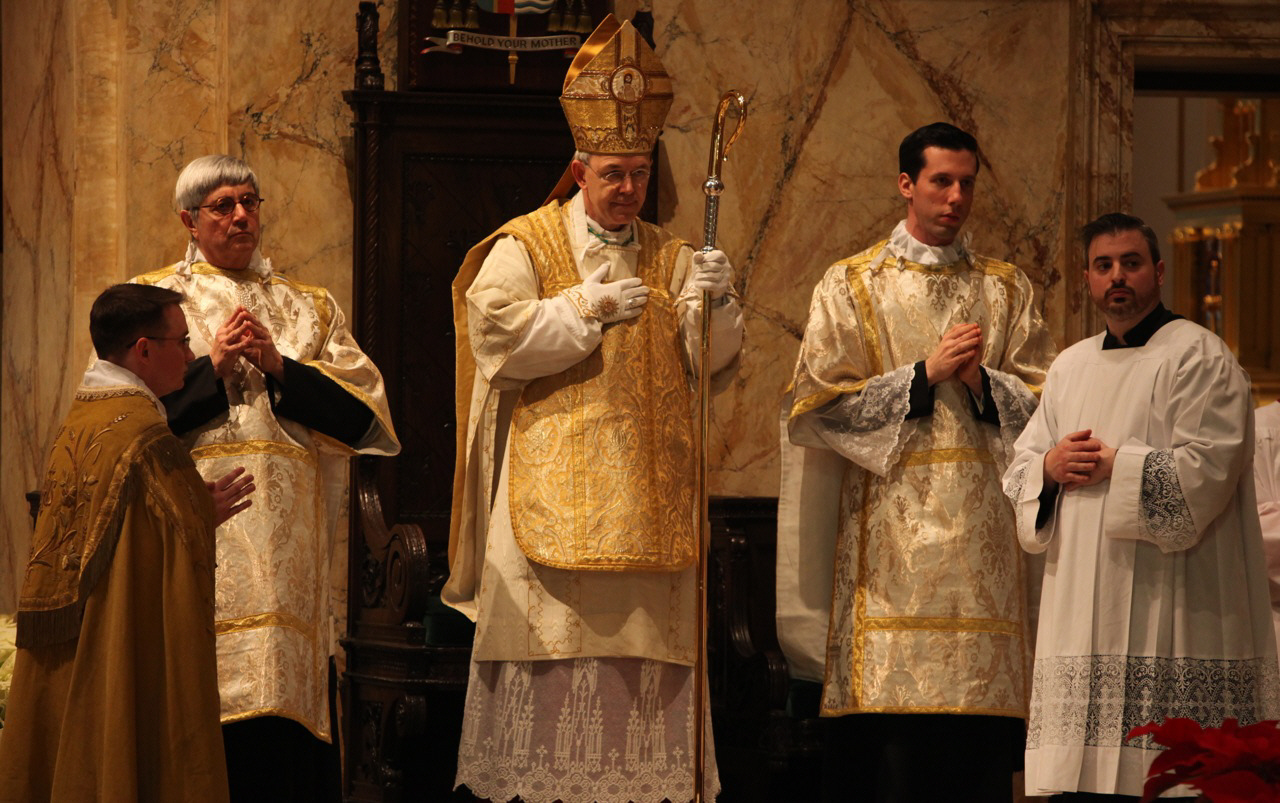
Archives
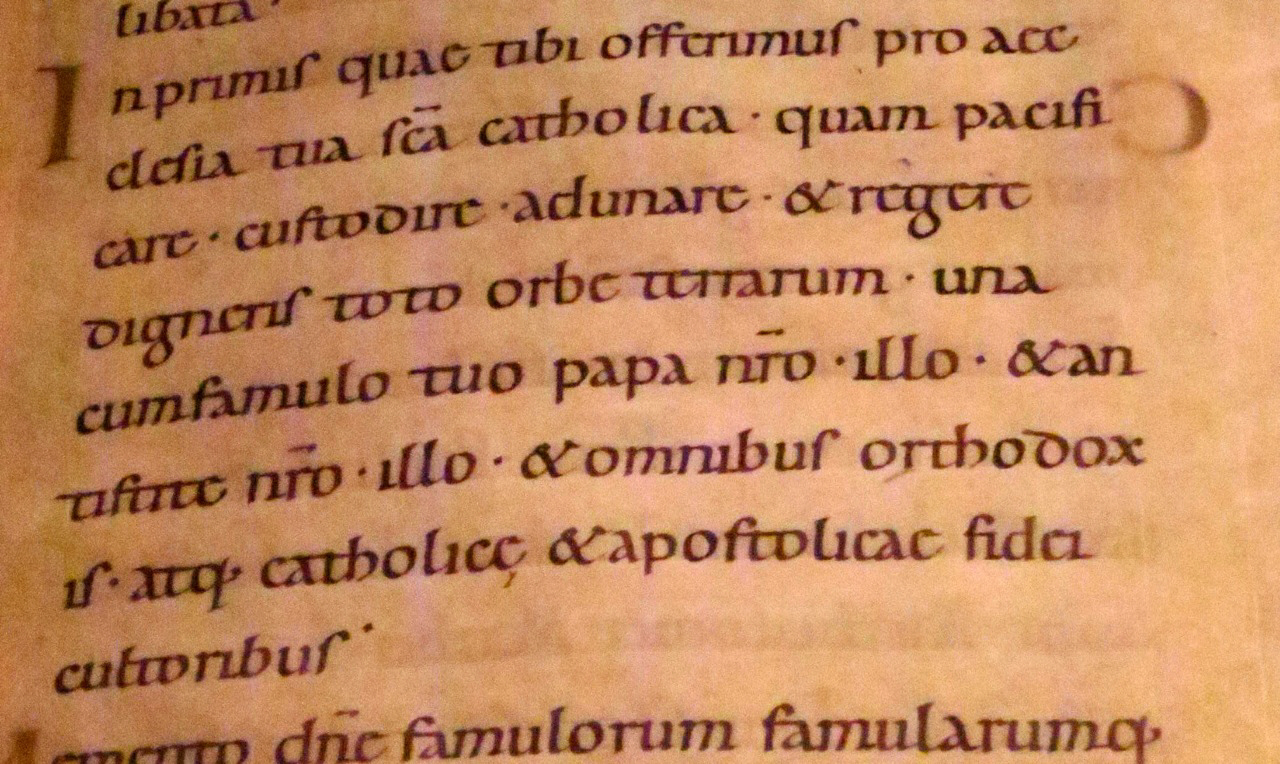
[powr-hit-counter label="2775648"]
